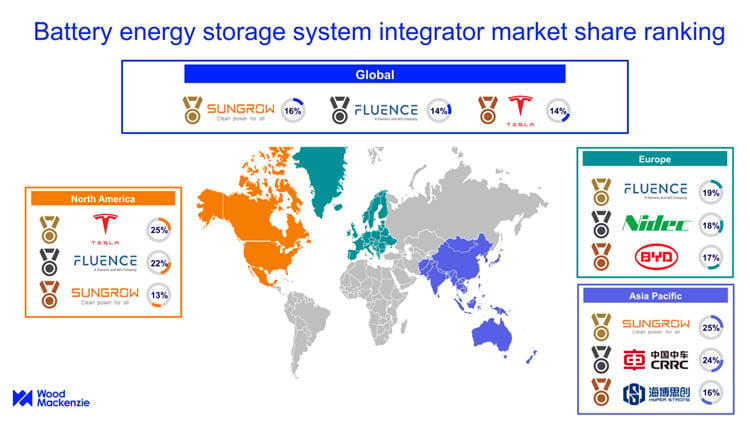Report on the Future of Small-Scale Renewable Power Stations in East Anglia
Introduction
Small-scale renewable power stations in East Anglia, which contribute significantly to sustainable energy production and local employment, face uncertainty due to the potential withdrawal of government financial support. This report highlights the challenges and implications for these facilities, emphasizing their alignment with the United Nations Sustainable Development Goals (SDGs), particularly SDG 7 (Affordable and Clean Energy), SDG 8 (Decent Work and Economic Growth), and SDG 13 (Climate Action).
Current Operations and Economic Importance
Melton Renewable Energy operates three biomass power plants located in Thetford (Norfolk), Ely (Cambridgeshire), and Eye (Suffolk). These plants generate electricity by burning agricultural waste such as poultry litter and straw, providing a sustainable method of waste management and energy production.
- The power stations contribute to SDG 7 by generating clean and affordable energy.
- They support SDG 8 by providing approximately 150 jobs across the business.
- Utilizing agricultural waste aligns with SDG 12 (Responsible Consumption and Production).
Government Support and Contract Expiry
The company has benefited from the UK government’s Renewables Obligation scheme, which offers financial incentives to renewable energy producers. However, the current contract is set to expire in April 2027, and there are no confirmed plans for its renewal.
- Without continued support, the economic viability of these power stations is at risk.
- Potential job losses threaten local economic stability, impacting SDG 8.
- The absence of subsidies could undermine progress toward SDG 7 and SDG 13.
Statements from Industry Leaders
Eddie Wilkinson, Chief Executive of Melton Renewable Energy, emphasized the urgency of government commitment:
- He warned that without subsidies, the stations may become economically unviable.
- He highlighted the environmental benefits of using waste products instead of cutting down trees, supporting SDG 15 (Life on Land).
- Wilkinson called for long-term certainty to secure the future of these renewable energy sources.
Environmental and Community Impact
Richard Bloomfield, manager at Thetford Power Station, which produces enough energy for approximately 100,000 homes annually, expressed concerns about environmental consequences if the plants cease operations:
- Without the facility, 450,000 tonnes of agricultural waste would accumulate on fields, potentially polluting watercourses and harming river ecosystems, negatively affecting SDG 6 (Clean Water and Sanitation) and SDG 14 (Life Below Water).
- The power station plays a critical role in local infrastructure and environmental protection.
Government Assessment and Political Support
The Department of Energy Security is currently evaluating the potential impacts on energy security, clean power, and environmental sustainability following the subsidy’s expiration. No final decisions have been made regarding ongoing support for small-scale biomass generators beyond 2027.
Labour MP for South West Norfolk, Terry Jermy, supports the continuation of biomass power stations, recognizing their:
- Economic importance
- Environmental benefits
- Contribution to electricity supply
He noted encouraging discussions with the government and stressed the importance of these facilities in achieving sustainable development objectives.
Conclusion and Recommendations
- Renewed government support is critical to maintain the economic viability of small-scale renewable power stations in East Anglia.
- Securing long-term contracts will protect jobs and promote sustainable economic growth (SDG 8).
- Continued operation of biomass plants will contribute to clean energy generation (SDG 7) and climate action (SDG 13).
- Proper waste management through these facilities supports environmental sustainability and pollution prevention (SDGs 6, 12, 14, and 15).
- Stakeholders should prioritize collaborative efforts to ensure these renewable energy sources remain integral to the UK’s energy infrastructure.
1. Sustainable Development Goals (SDGs) Addressed or Connected
- SDG 7: Affordable and Clean Energy
- The article discusses small scale renewable power stations generating energy from agricultural waste, highlighting the importance of clean and affordable energy sources.
- SDG 8: Decent Work and Economic Growth
- The article mentions the risk to 150 jobs at Melton Renewable Energy, emphasizing the economic and employment aspects linked to renewable energy industries.
- SDG 12: Responsible Consumption and Production
- Use of agricultural waste and litter for energy production reflects responsible waste management and sustainable consumption practices.
- SDG 13: Climate Action
- The article highlights concerns about environmental pollution if biomass plants close, implying the role of renewable energy in climate mitigation.
- SDG 15: Life on Land
- Preventing pollution of rivers and watercourses by managing agricultural waste responsibly supports the protection of terrestrial ecosystems.
2. Specific Targets Under Those SDGs Identified
- SDG 7: Affordable and Clean Energy
- Target 7.2: Increase substantially the share of renewable energy in the global energy mix.
- Target 7.a: Enhance international cooperation to facilitate access to clean energy research and technology.
- SDG 8: Decent Work and Economic Growth
- Target 8.5: Achieve full and productive employment and decent work for all, including young people and persons with disabilities.
- Target 8.4: Improve resource efficiency in consumption and production.
- SDG 12: Responsible Consumption and Production
- Target 12.5: Substantially reduce waste generation through prevention, reduction, recycling and reuse.
- SDG 13: Climate Action
- Target 13.2: Integrate climate change measures into national policies, strategies and planning.
- SDG 15: Life on Land
- Target 15.1: Ensure the conservation, restoration and sustainable use of terrestrial and inland freshwater ecosystems.
3. Indicators Mentioned or Implied to Measure Progress
- SDG 7 Indicators
- Indicator 7.2.1: Renewable energy share in the total final energy consumption — implied by the article’s focus on renewable power generation from agricultural waste.
- Indicator 7.a.1: International financial flows to clean energy research and development and renewable energy production — implied by the discussion of government financial support and subsidies.
- SDG 8 Indicators
- Indicator 8.5.2: Unemployment rate, by sex, age and persons with disabilities — implied by the risk to 150 jobs if subsidies end.
- SDG 12 Indicators
- Indicator 12.5.1: National recycling rate, tons of material recycled — implied by the use of agricultural waste and litter as energy sources instead of disposal.
- SDG 13 Indicators
- Indicator 13.2.2: Total greenhouse gas emissions per year — implied by the environmental benefits of biomass energy reducing pollution.
- SDG 15 Indicators
- Indicator 15.1.1: Forest area as a proportion of total land area and quality of freshwater ecosystems — implied by concerns about pollution of watercourses if waste is not properly managed.
4. Table of SDGs, Targets, and Indicators
| SDGs | Targets | Indicators |
|---|---|---|
| SDG 7: Affordable and Clean Energy |
|
|
| SDG 8: Decent Work and Economic Growth |
|
|
| SDG 12: Responsible Consumption and Production |
|
|
| SDG 13: Climate Action |
|
|
| SDG 15: Life on Land |
|
|
Source: bbc.com







